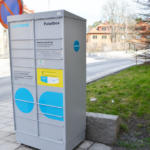
Mail & Express – the convergence of the parcels market
Robin Parr-Davies, Express Director, Triangle Management Services
World Mail Review May 2008
The Evolution of the Market
Historically there was little difference between packets, parcels and the letter post market sectors in terms of delivery. The postal authorities largely held sway. The incumbent postal authorities enjoyed monopolies, with packets (lighter-weight parcels) as part of the mail, and protected by the USO (Universal Service Obligation). Some also operated distinct parcel delivery subsidiaries, with varying degrees of success.
There were some private parcels delivery companies in operation but their services were largely based on a two to three day delivery time, what we would later come to refer to as deferred services. The new logistics of “just in time” was in its early adopter phase with most retail deliveries being perceived as haulage, based on full load (FTL) or less than full load (LTL) – the milk-round.
What other home deliveries there were came from the traditional mail order catalogue companies utilising their large numbers of “lifestyle” couriers, typically married women working part time.
Then in the 1980’s the domestic overnight express parcel delivery market was created, led in the UK by a company from Australia called Quickasair offering, for the first time, guaranteed overnight delivery. Quickasair was to become TNT Express.
The Development of Express
The express parcels market experienced significant growth and, in the UK’s case, quickly overtook the incumbent postal authority’s parcels activity, although not the packets sector in which Royal Mail has still retained a significant share. At one stage there were almost twenty individual operators competing to offer a range of nationwide day and time definite, and deferred, services for the delivery of parcels.
In the rest of Europe the story was largely the same, except that there tended to be fewer competing service providers and an operator led distinction between express (“guaranteed” next day) and parcels (non-guaranteed next day and later than next day) delivery services evolved.
There was periodic structural upheaval, often reflecting the economic cycle, in which companies came and went, mergers and acquisitions took place, and companies waxed and waned in their shares of an increasingly competitive market. The mail and parcels sectors were seen to go their separate ways.
In recent times, however, postal authorities across Europe have come back into the express parcels market in a big way. Deutsche Post through DHL Express (and Securicor Omega Express in the UK), Royal Mail’s GLS and Parcelforce Worldwide, and the Dutch Post Office through its acquisition of TNT Express are perhaps the best known examples.
Today we see that even smaller European postal authorities are getting in on the act, Austria Post’s acquisition of Trans-o-flex for example. Running parallel has been a general trend towards a focus on scale as evidenced by merger and acquisition activity, such as City Link’s 2006 UK acquisition of Target Express, leading inexorably towards supplier consolidation driven as much by the greater (delivery stop) cost savings available as a desire for scale for its own sake.
E-Retail is Driving Convergence
Today the biggest influence in the developing convergence of the two sectors (mail and parcels) has been the growth of the internet and the related e-Retail activity. According to the imrg, the accepted authority on e-retail, this now accounts for some 10% of all retail sales in the UK. Hermes, the German based home delivery specialist, has declared that it sees as much as 10% of future home deliveries being cross border as a result of ease of purchase over the internet.
The B2C, and to some extent C2C, parcels delivery sectors have therefore in recent times displayed significant growth; whereas the traditional B2B sector, although still by far and away the larger of the parcels sectors, has shown more modest growth, and then more often in volume rather than in price.
At the same time the mail, or postal sector, is opening up to competition, albeit at varying speeds in different European countries, just when its traditional volumes are under threat due to electronic substitution from e-mail and the internet.
In this changing environment, the parcels carriers that had their history firmly rooted in mail order, such as Hermes, Home Delivery Network and ParcelNet, have come into their own, whilst the more B2B orientated carriers have had to seek creative solutions to the rising demand for home deliveries. Some parcels carriers, such as the UK’s Amtrak, have shifted their focus to this sector whilst others have developed a partnership approach. DPD (Parceline) in the UK has launched its Homecall service through a partnership with Parcelnet, and DHL Express UK has launched a new life style courier service using a parallel network operation branded DHL@Home.
The postal authorities are also seeking more effective solutions. Deutsche Post’s network amalgamation in Germany, for example; and Royal Mail is expected to address its packet sector in the near future.
Convergence is already evident in market structure, as witnessed by the involvement of the posts across all areas of the parcels sector. It is now increasingly the case in service provision, driven by the internet inspired growth of the B2C sector.











